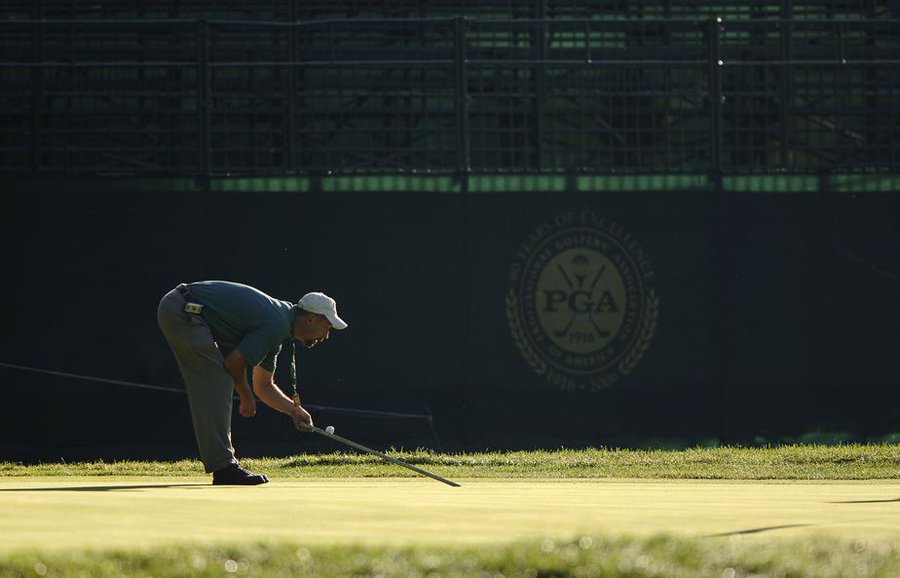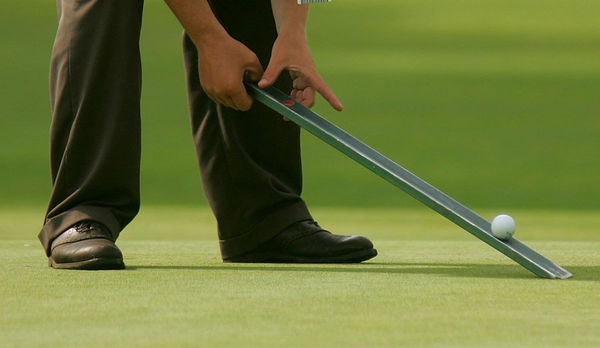

If you’ve ever watched professional golf and heard its commentary, you must’ve come across a word that sounded too scientific; a stimpmeter. However, upon some research, we realized it’s much simpler than it looks and sounds.
Watch What’s Trending Now!
ADVERTISEMENT
In very basic words, it is a device used to measure the speed of the green. Nevertheless, its importance in the sport cannot be appreciated enough, especially for those looking to master their skills on the green. So, for the next time, you hear the word and wonder what it is, we’ve got you covered with everything you need to know about a stimpmeter.
Top Stories
Pro Suffers Disqualification at PGA Tour Q-School After Several Players Withdrew Abruptly

LIV Golf to Cut Ties With Veteran Pro After His PGA Tour Return Intentions Became Public

Support Pours In From Phil Mickelson as ASU Football Coach Chokes Back Tears in Public

Jason Day Opens Up About Going Through Traumatic Childhood Just to Play Golf: ‘It Was Tough’

Tom Brady & Co. ‘Misunderstood’ Scottie Scheffler After He Picked Family Over Golf Career – Insider

ADVERTISEMENT
What is the use of a stimpmeter in golf?
Have you ever felt that on particular days and on particular greens, you simply can’t putt? Well, there’s nothing wrong with that because greens change their speed very frequently. To understand these changes, Edward Stimpson got the idea for this device at the 1935 U.S. Open, when he felt the need to prove that the greens were unreasonably fast. (the winning score that year was +11)

Imago
Golf ball on green selective focusOthers you may like:
To do this, he developed a wooden tool that calculates the distance the ball rolls when released at an angle from the device. In 1976, Frank Thomas of the United States Golf Association redesigned it using aluminum, making it green. Consequently, it was officially first used during the 1976 U.S. Open. Furthermore, adaptions and advancements have been made to the simple device, though the basic concept remains unchanged.
ADVERTISEMENT
Watch This Story- LETS GO BRANDON FAME BRANDON BROWN RECIEVES A MASSIVE SETBACK
ADVERTISEMENT
How is it used?
It is a three feet ‘stick’, with a notch on one of the ends. After selecting a flat area of the green, the stimpmeter is laid flat on the ground and the ball is placed in the notch. Slowly, one end of the device is lifted to form a ramp, until the angle is right and gravity propels the ball to slide down. The distance that the ball rolls on the green is measured and is taken six times, thrice in both directions.

ADVERTISEMENT
It is done in both directions to balance the effect of any slope, and to make sure any error is compensated for. The average roll of both sides is added and then divided by 2 and the result is what we were seeking; the speed of the green! However, all the readings must be within 8 inches of each other, or else another reading is carried out.
While there is no perfect reading, a speed of around 9 to 10 is considered average. However, professional competition greens, in order to make them quicker, can even achieve readings of up to 13.
ADVERTISEMENT
ADVERTISEMENT
ADVERTISEMENT
ADVERTISEMENT

